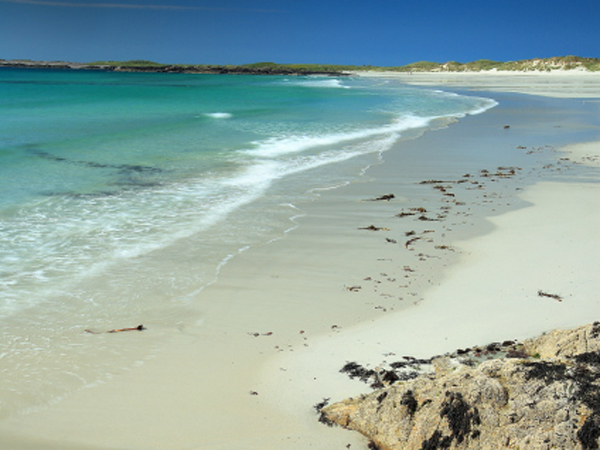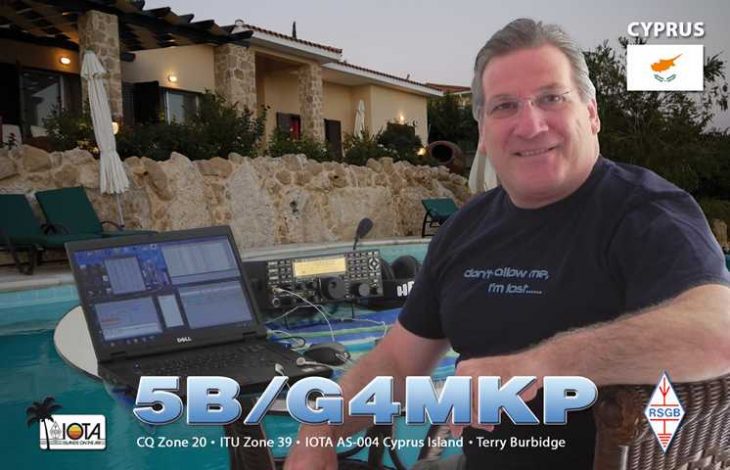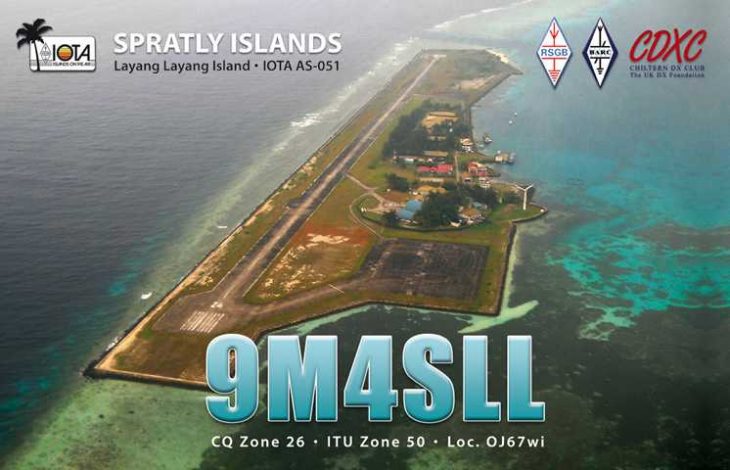9M4SLL Spratly Layang Layang, 7 – 13 August 2012
by Steve Telenius-Lowe, 9M6DXX
Spratly DXpeditions are a bit like the Number 43 bus… you wait for hours then three come all together or, as in this case, you wait four years for a Spratly DXpedition then you get three within six months. Yes, before this year the last activity from Spratly had been in April 2008. Some may recall the January 2011 DX0DX operation that was scheduled to take place from the Philippine-occupied Thitu, or Pagasa, island which, unfortunately, never materialised. As a result, Spratly had gradually worked its way up The DX Magazine ‘100 Most Needed Countries’ survey to number 29 this year, up from 32 last year (world-wide, mixed modes).
SOME HISTORY
In 1998 I was a member of the 9M0C Spratly DXpedition that operated from Layang Layang Island (formerly known as Swallow Reef). This DXpedition netted 65,524 QSOs, the highest ever from Spratly and a record that still stands. After I moved to Kota Kinabalu (9M6) in 2005 I began to think about making a return trip to Layang Layang. The following year I teamed up with John, 9M6XRO (who had moved to Kota Kinabalu earlier in 2005), in an attempt to activate Spratly. In addition to having a licence from the Malaysian licensing authority, it is also necessary to obtain separate permission from the Malaysian government to operate amateur radio from Layang Layang. In 2006 that permission was granted by the Royal Malaysian Navy, which maintains a base on the island. For John and me this was easy: we visited the navy HQ in Kota Kinabalu, provided a photocopy of our passports and a passport-size photo, filled out an application form and a week later we had the necessary permission.
We were about to announce the DXpedition for April 2007 when a Japanese group announced its activity as 9M4SDX at precisely the time we had planned to go. Never mind, we thought, for us it is easy to go any time, so we would postpone our trip until the following year. In 2008 we applied and again received permission, only to have the same thing happen when an American couple announced their activity for early April 2008, followed later in the month by an operation by a group of three Norwegian amateurs.
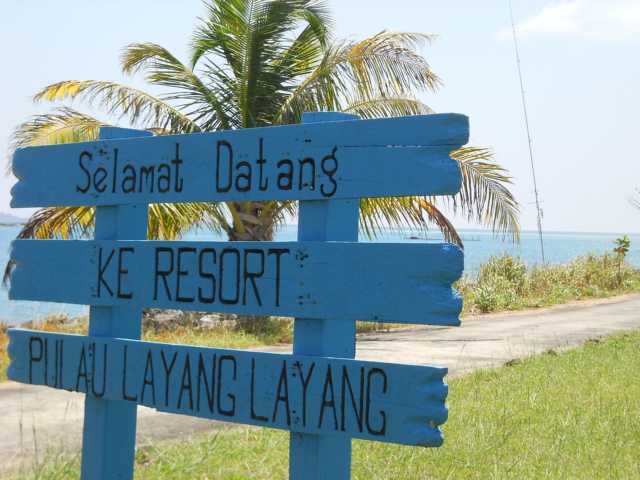
John and I then applied for a third time, but this time permission was not forthcoming. Unbeknown to us, in May 2008 the authority responsible for the island had been transferred from the Royal Malaysian Navy to the government’s National Security Council. The responsible office was now outside Kuala Lumpur, a two and a half hour flight away for us. Letters sent to the office by us and the navy commander simply went unanswered.
Since then at least two groups had announced operations from Layang Layang that did not happen. It seemed it was no longer possible to obtain that all-important operating permission.
Then, to our surprise, Pekka Ahlqvist, OH2YY, made a short one-man DXpedition from Layang Layang in March this year, followed by the 9M0L operation the following month. Operating permission was once again being issued, we thought. John wrote to the office in May but heard nothing, despite several follow-up phone calls. By July we had all but given up hope of ever activating Layang Layang when, out of the blue, a short e-mail was received granting permission for the two of us for the following month!
Bookings were quickly made with the resort on the island and the flights booked. With the cooperation of the Borneo Amateur Radio Club, of which John and I are Life Members, we received a special event licence with the call 9M4SLL.
EQUIPMENT & ANTENNAS
There is a weight limit on flights to and from the island, so we wanted to keep things as lightweight as possible while still operating two 400W stations. I have a Yaesu FT-857D and Tokyo Hy-Power HL-1.2Kfx linear, so my choice was quite simple. John has an Icom IC-2KL linear but, together with its power supply, it weighs 21kg. He decided to take a 1960s-vintage KW-1000 linear, using a pair of 572B valves, instead. At only 15kg it saved an important 6kg, while providing approximately the same output.
Although John has an Icom IC-7000 transceiver, we have used it together with my FT-857D at various locations before and have suffered from phase noise causing interference in each direction. He decided instead to take his Ten-Tec Omni VI transceiver which, although larger and heavier than the IC-7000, has a very clean transmit output and superior receive performance.
For antennas, I have used a Butternut HF6V-X for many years and have always had good results with it. However, it does not cover 12 and 17m, so I ordered the Butternut A-17-12 add-on kit from Bencher which fortunately arrived in good time before the trip.
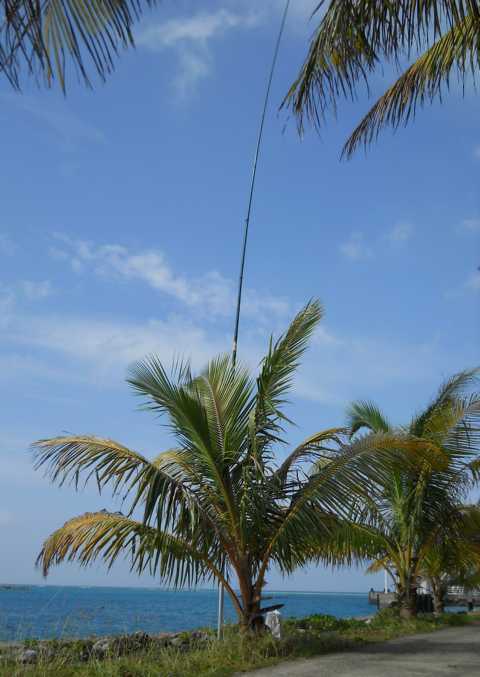
Unfortunately, it took longer to get on the air than we had anticipated. The first problem was with the Butternut. The antenna was resonated easily on 80m, 40m, 30m and 20m, but the SWR was all over the place on the higher bands, and almost infinity on 15m. I assumed that the 15m problem was something to do with the 12m / 17m kit – after all, the last time I used it, it worked fine without the kit, put the kit on and suddenly it is impossible to get a good SWR on 15m. Hmm. So the antenna came down and we checked all the joins, making sure there was low resistance between each section of the HF6, but couldn’t find any problems. Antenna back up; still the same. Down it came again and a lot more head scratching went on. I checked that the 15m wire decoupling stub was making a good electrical connection with the tubing of the Butternut. It was. But the 15m problem had to be something to do with the decoupling stub.
Eventually (and it took quite a while) I discovered that there was a completely open circuit between one end of the 15m decoupling wire and the other end of the same length of wire! How can a single length of plastic insulated wire be open circuit? I snipped off a couple of inches from both ends and checked again. Still definitely open circuit!
So I cut off one of the radials, replaced the 15m decoupling stub with the same length of radial wire, put up the antenna again and hey presto! – low SWR on 15m.
It took a while to get good SWR on 17m, 12m and 10m, but eventually all was OK. I bought the HF6V-X in 1990, so I guess after 22 years of assembly and disassembly, and operation (usually) right next to the ocean, salt water had got into the wire, worked its way up through capillary action, and eventually corroded so much that the wire had crumbled or snapped somewhere along its length.
We then started work on John’s antenna. He wanted to try a 43ft vertical for 20, 30 and 40m, and four separate 5/8-wave wires for 10, 12, 15 and 17m supported by a lightweight fibreglass cross-arm at the 37ft level. We made this up and started to push up the whole contraption. I was at the bottom holding it in place and John was walking it up, but I yelled at him to stop as the weight of the cross-arm plus the four wires was causing the pole to bend so much it seemed likely to break. Plan B was to remove the cross-arm but still to use the four 5/8-wave wires, tied at the 37ft level, and splayed out at different angles. This time the pole went up easily, but the five wires became badly tangled. By this time it was 5.00pm, we had been out in the sun since 9.00am in a temperature of around 35C in the shade (though there was no shade), we were both very tired, dehydrated, sunburned and needed a rest, a long drink of water and, in fact, three cold beers. After the beers it was already dark and too late to start thinking about radials.
So for the first night, we had one station on the air but we were so tired (having also been up since 3.00am to catch the flight) that we closed down early anyway. The following morning we were out in the sun again untangling the wires and laying out the radials on John’s verticals. Each wire was matched through a wide-range (manual) ATU at the base of the vertical. It was easy to get a good match on all bands apart from 12m. Whatever we tried, 12m would not match.
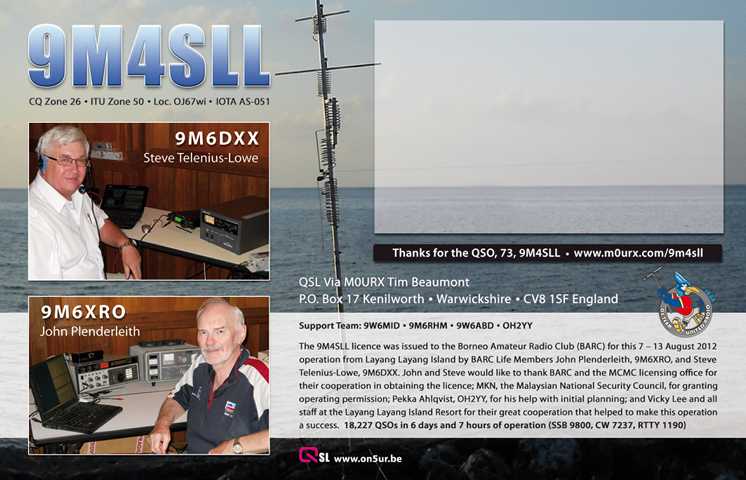 9M4SLL ON THE AIR
9M4SLL ON THE AIRWe became fully active with both stations on 8 August and immediately found that the verticals by the water were doing their usual stuff. We were lucky with propagation and had some great long-path openings into VE1, W1, 2, 3 and 4 – even one night on 12m SSB. John tried 12m CW the next night but although he worked plenty of Europeans unfortunately there was no long-path North American opening the second night.
Most nights 12m and 15m stayed open till about 2.00am, 17m till 4.00am, and 20m just about throughout the whole night. This is unheard of from home in 9M6, only 300km from Layang Layang, even using beam antennas, though inland. On the other hand, on most days all bands were almost dead from shortly after dawn until about 4.00pm.
With only two stations (and operators) we obviously must have missed some openings. For example, when 12m was wide open to Europe perhaps 10m would have been as good?
The local noise on the island was absolutely zero and it was possible to work stations at ESP levels, providing another station did not call on top!
John’s Ten-Tec proved to be extremely clean and not once did I receive any interference from him. As suspected, the FT-857D, though a great little transceiver, was not as good in this regard and John had the occasional problem with phase noise on one or two particular combinations of bands. By and large, though, this was not an issue. We used monoband Dunestar band-pass filters on each station.
The 43ft vertical worked well; it was marginally better than the Butternut on 40, 30 and 20m, but both it and the 5/8-wave wires were down on the Butternut on the higher bands. On 15m in particular, the Butternut was way better than the 5/8-wave wire, even though there was a good match through the ATU.
STATISTICS
I have always reckoned that 1000 QSOs per station per day is a good target for a DXpedition. But on this trip thanks to a combination of an almost perfect location with good propagation – and putting in some long operating hours! – we exceeded that target by almost 50%. In 6 days and 7 hours of operating we made 18,227 QSOs, of which 9800 were on SSB, 7237 on CW and 1190 on RTTY.
The continental breakdown was as follows:
Africa 121 0.7%
Asia 5839 32.0%
Europe 9609 52.7%
North America 2281 12.5%
Oceania 302 1.7%
South America 75 0.4%
Totals 18,227 100%
John and I left the island in a Twin Otter at 9.00am local time on 14 August and I was back home having a cup of tea at 10.50am. It is weird to realise that there is a rare DXCC entity just a 60-minute flight from home! Thanks to QSL Manager Tim, M0URX, logs were uploaded to Club Log and Logbook of The World the following day, just two days after the end of the operation. For those of us who prefer traditional paper QSLing, a four-sided colour card is being printed for direct cards and a two-sided colour card for bureau requests.
Photographs have been provided with permission by Steve Telenius-Lowe, 9M6DXX.


